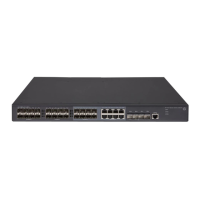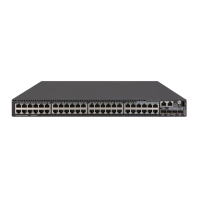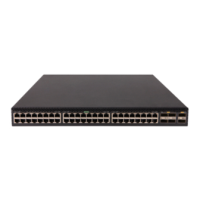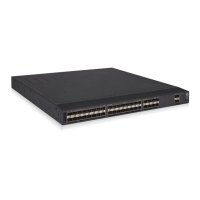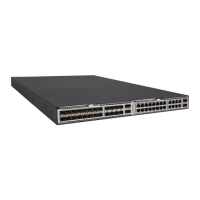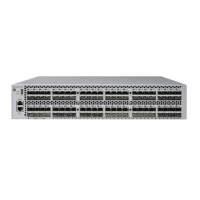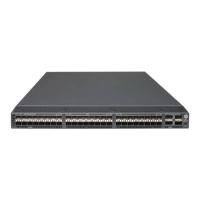36
Table 9 Physical IRF port requirements
Candidate physical IRF ports Requirements
• Four fixed SFP+ ports on the front panel
• Ports on the interface card on the rear panel
All physical ports to be bound to an IRF port must
have the same data rate.
Planning the cabling scheme
Use SFP+ cables or SFP+ transceiver modules and fibers to connect the IRF member switches. If
the IRF member switches are far away from one another, choose the SFP+ transceiver modules with
optical fibers. If the IRF member switches are all in one equipment room, choose SFP+ cables. For
more information about SFP+ cables and SFP+ transceiver modules, see "Appendix C Ports and
LEDs."
The following subsections describe several HPE recommended IRF connection schemes, and all
these schemes use a ring topology.
In these schemes, all physical IRF ports are located on the same side. If physical IRF ports are on
different sides, you must measure the distance between them to select an appropriate cable.
Connecting the IRF member switches in one rack
Use SFP+ cables to connect the IRF member switches (9 switches in this example) in a rack as
shown in Figure 41. The switches in the ring topology (see Figure 42) are in the same order as
connected in the rack.

